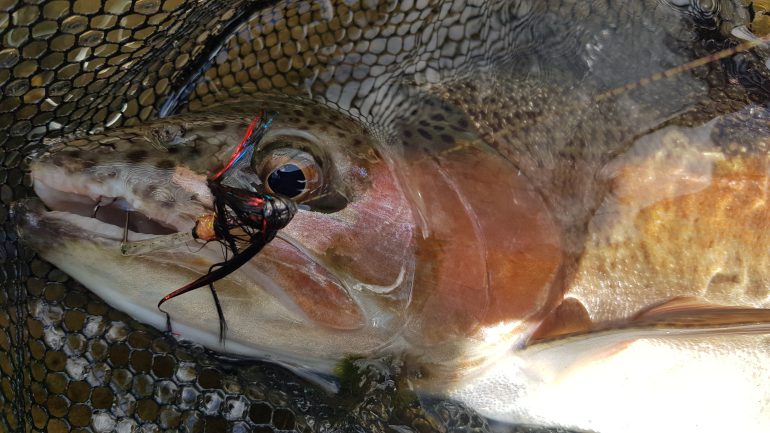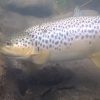- Empty cart.
- Continue Shopping
Memoirs of a Gear Junkie (Part 2)

If you could only have one, which weight would you go?
I’ve found a lot of people looking to get into the double handed game get quite confused with the rod lingo – Spey, Switch, Micro Spey…. The whole “Switch” rod name has always felt like an absolute marketing ploy to me. Instead of shorter, lighter Spey rod for swinging flies, it is shorter, lighter Spey rod for swinging flies that you can be sold a weight forward line for nymphing to carry around in your bag or put in the cupboard. I have seen quite a lot of negative effects ripple on from that term. It’s a great word to make people feel they are getting value for money – a bit like a Swiss Army knife. It opens up a multi-purpose world where the promise of more utility makes people want to bite and rings in another sale. However, apart from the lightest of weights, I can’t think of much worse than spending an afternoon nymphing bombs on the Tongariro with an 8wt Switch rod!

This is probably part of the reason, you were looking for a switch rod in the first place, right? As you wanted a change from this style of fishing and wanted to try something new. I mean you could probably tie a tapered leader on the tip and triple it up as a Tenkara rod, but there is no point testing out your religious proclivities. That’s why I like the term Micro-Spey; it alludes to the fact that once you buy a double handed rod, you are probably never going actually use it for any other purpose than swinging flies – just in a lighter, shorter manner than a full Spey rod!
At the end of the day for winter fishing, the right choice is the weight of rod that is going to allow you to comfortably cast the sink tip with the density of tungsten that is needed to really get down and dirty and get into some fish. If you didn’t need to get down to get into the fish, people wouldn’t throw “chuck and duck” nymphs with a piece of fluff the size of a budgie, and we wouldn’t need sausage shaped Skagit heads to drive tips with enough tungsten to produce the lights of a mansion. Add tungsten cone head or lead eyed flies to the equation and you add another level of clunkiness, which going up a rod weight and using a heavier head can combat. Good casting can help you drive such rigs more efficiently of course, so the more willing you are to work on technique, the more likely you can handle a little more weight on lower rated rods. Grain windows can be quite wide on rods and it can depend on how you cast and what action you want in your rod, but usually the upper mid-section of a grain window is probably a safe bet to start with for a Skagit style suited best suited for winter style fishing with heavy sink tips. I have a 13 foot 5/6 weight that I have experimented on with heads ranging from 325 up to 450gr. It casts all of these effectively with a 132gr, 12ft sink tip (T11).

But for someone new, I’d give them a 400gr and that would be supple enough to snap the line over effortlessly but still give them a good feel of the rod’s load. The thing is though, I’ve been fishing a demo 11ft 5wt double handed rod lately, and it has been so nice. It easily casts a decent sink tip and has been an awesome fish fighter. It seems ample for rivers like the Tongariro, except on the very windy days perhaps, or when I want to throw some heavy lead, so I’m coming back to the drawing board of 3, 5, 7 or 4, 6, 8!?
Whether to get in there with a cheaper alternative to start with and then upgrade later is an important consideration and literally depends on how deep your coffers are. A cheaper rod is going to get you out there on the water fishing whereas reading countless product reviews is going to get you out there buying reading glasses sooner rather than later. There are some great lower priced options these days. I bought my first double handed rod knowing that I was going to like it, and with the proclivity that as soon as I justified liking it, I would be getting ready to upgrade it and put it on Trademe. I did, find a happy buyer looking to start out as I did and never looked back!

But, when I look at my collection of rods build, however, it does give me admiration for someone close to me who has an abundant source of carbon wands to experiment with that is still fishing the exact same entry level rod he started on and to tell you absolute truth – THE BLOODY TROUT HAVENT EVEN NOTICED!!!
Of course, a new rod means new line sizes and reels and spools to house these! Spools are expensive, so there is the tendency to start with a cheap reel to simply act as a storage facility. But the problem with cheaper reels is that line running lines, especially the beautiful slick mono lines that shoot like a Lazar, tend to slip out.

Then the revelation of a full-cage reel to solve this issue appears as if from the heavens; then the sound of a classic styled roaring clicker drag reverberates through the skies; the gleam of the polished chrome of a Speyco glints in the sun. And with all of it the dream of new, beautiful shiny gear – the scouring of websites for gear reviews, the twisting and turning of internet forums, the growing watchlist of Trademe auctions, hidden receipts, concealed purchases and deliveries to work addresses, compromises echoing you need a new reel as much as she needs that designer handbag – all the signs of a true gear junky – or just another fisherman taken Intruder, head and tip!
If this resembles you remember – YOU ARE NOT ALONE!

As I write this with my place in the ring of wooden seats at the local community hall, I realize that I really, really do have a problem! The rods I’ve been hinting at and have waiting for well over a year now will be released in July, and I still can’t decide whether I want to get the 4 or the 5 weight!






